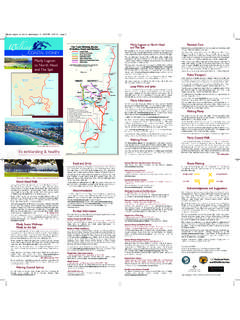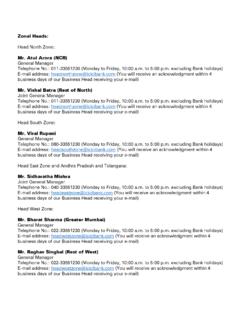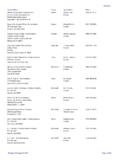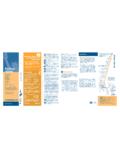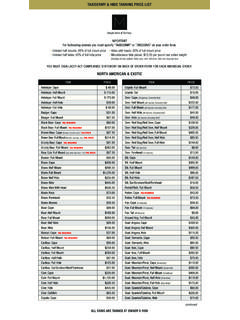Transcription of Return-to-Learn After Concussion - North Carolina Healthy ...
1 return to learn After Concussion : Implementation Guide Return-to-Learn After Concussion Guidelines for Implementation 1. return to learn After Concussion : Implementation Guide Acknowledgements The following individuals are gratefully acknowledged for their contributions to the development of this Implementation Guide: Ellen Essick, NC Department of Public Instruction Cynthia Floyd, NC Department of Public Instruction Brendan Hendrick, University of North Carolina -Chapel Hill Stephen Hooper, University of North Carolina Chapel Hill Burt Jenkins, NC Department of Public Instruction Lynn Makor, NC Department of Public Instruction/ Carolina Institute for Developmental Disabilities Dreama McCoy, NC Department of Public Instruction Elizabeth Newlin, Wake County Public Health Ann Nichols, NC Department of Health and Human Services, Division of Public Health Ashlee Taylor, Wake County Public School System In addition, The following groups are acknowledged for their contributions to this work.
2 Children & Youth Committee of the North Carolina Brain Injury Advisory Council (NCBIAC). NC Department of Public Instruction School-Based Practice Advisory Council for TBI. The following school districts are acknowledged for the available resources that have supported this work: Cabarrus County Schools Charlotte Mecklenburg Schools Wake County Public School System 2. return to learn After Concussion : Implementation Guide North Carolina STATE BOARD OF EDUCATION. Return-to-Learn After Concussion . ID Number: HRS-E-001. Approved: October 1, 2015. Effective: 2016-2017 School Year Implementation Guide/Resource Document Introduction _____. A Concussion is a mild form of traumatic brain injury (mTBI) that changes the way a person's brain normally works.
3 A Concussion is caused by a bump, blow, and/or a jolt to the head that may not involve physical contact. Concussions can occur with or without loss of consciousness. Signs and symptoms of a Concussion can show up right After an injury or may not appear or be noticed until hours or days After the injury. The physical symptoms that are common following a Concussion may include headaches, double vision, light sensitivity, dizziness, fatigue and/or sensitivity to noise. Learning difficulties that may be present include those associated with light and noise sensitivity, cognitive fatigue, slippages in attention, problems with memory, and/or slower processing speed. Any of these symptoms may negatively impact a student's learning, emotion regulation, or behavioral functioning in the school setting.
4 These symptoms usually resolve in 1-2 weeks in the majority of cases, but in many cases they can linger for months. Consequently, there is a need for guidelines to support all students in their return to the educational environment After sustaining a Concussion . In 2011 the North Carolina General Assembly passed the Gfeller Waller Concussion Awareness Act (GWCA), that addresses Concussion management for injuries experienced in the context of participation in public school sports. This law provided clear guidelines and procedures for managing the Concussion symptoms of middle and high school students, including return -to-play guidelines, but did not address non-sports related injuries, injuries that occurred outside the school setting, injuries to younger children, or the needs of students as they returned to the learning environment.
5 The current policy provides Return-to-Learn . guidelines that should assist school districts in addressing the learning, emotional, and behavioral needs of all students, including those under the GWCA, following a Concussion . In support of the return to learn policy, this Implementation Guide: 1) Provides guidelines for the identification of students who have sustained a Concussion ;. 2) Guides staff in the evaluation of a student with a Concussion and provides guidelines for parent notification;. 3) Provides parents and staff with Concussion education;. 4) Provides guidance for staff as they develop educational and health-related accommodations for students who have sustained a Concussion .
6 5) Provides guidance to staff as they provide educational supports for students with prolonged symptoms related to Concussion . (Persisting problems following Concussion in children are more common in those with previous head injury, as well as those who have experienced preexisting learning difficulties, neurological, or psychiatric difficulties.). 3. return to learn After Concussion : Implementation Guide Each of the following sections of this guide will explain a particular policy statement, offer examples of implementation, and provide resources that each LEA and charter school may use to develop local guidelines in meeting the needs of students who have experienced concussions.
7 (a) Each Local Education Agency (LEA) and charter school must develop a plan for addressing the needs of students, preschool through twelfth grade, suffering concussions. The plan must include: 1) Guidelines for removal of a student from physical and mental activity when there is suspicion of Concussion ;. Explanation: Any teacher, coach, school administrator, school counselor, school psychologist, school drug counselor, school nurse, attendance officer, or other school professional who suspects that any student has suffered a Concussion or other head injury shall immediately remove the student from any activities that may result in a further risk of head injury ( , physical education, recess, athletic competition, etc.
8 Examples of Any school employee who suspects that a student has suffered a Concussion , or Implementation: otherwise seriously injured their head, neck or back, will immediately remove the student from the physical activity in order to reduce the risk of further injury. In some instances, the student should not be moved. Signs and symptoms of a possible head, neck, and/or back injuries are listed below. If you observe a student experiencing even one of these symptoms, the student MUST. immediately be removed from all participation. If the Certified Athletic Trainer (ATC)/First Responder is available, contact him/her immediately so an evaluation can be performed. If the ATC/First Responder is not accessible, provide the following care.
9 Please note that if the student is unconscious or has an altered level of consciousness, 911 should be called immediately. Signs of Head, Neck, and Back Injuries include: Change in consciousness Severe pain or pressure in the head, neck, or back Tingling or loss of sensation in the hands, fingers, feet, or toes Partial or complete loss of movement of any body part Unusual bumps or depressions on the head or over the spine Blood or other fluids in the ears or nose Heavy external bleeding of the head, neck, or back Seizures Impaired breathing as a result of injury Impaired vision ( , double vision) as a result of the injury Nausea or vomiting Persistent headache Loss of balance Bruising of the head, especially around the eyes or behind the ears 4.
10 return to learn After Concussion : Implementation Guide Resources: Websites: Center for Disease Control - Heads-up Program - North Carolina Emergency Guidelines for Schools - BrainSteps Recommended Protocol - Resources from other school districts: Cabarrus County Schools: Charlotte-Mecklenburg Schools: Management of the Student Post- Concussion Wake County Public School System: WCPSS Management of Suspected Severe Injuries 5. return to learn After Concussion : Implementation Guide 2) Notification procedure to education staff regarding removal from learn (ing) or play;. Explanation: If a student has a diagnosed Concussion , then all stakeholders in the student's education must be notified ( , teachers, coaches, administrators, etc.

